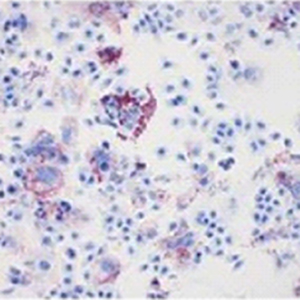 Smart Citations
Smart CitationsSee how this article has been cited at scite.ai
scite shows how a scientific paper has been cited by providing the context of the citation, a classification describing whether it supports, mentions, or contrasts the cited claim, and a label indicating in which section the citation was made.
Polydatin reverses oxidation low lipoprotein (oxLDL)-induced apoptosis of human umbilical vein endothelial cells via regulating the miR-26a-5p/BID axis
Atherosclerosis is a disease in which lipids and inflammatory factors accumulate on the walls of arteries, forming plaques that eventually block the flow of blood. Polydatin was derived from plant knotweed, which could play an important role in inhibiting the progression of atherosclerosis. However, the mechanism by which polydatin regulates the genesis and development of atherosclerosis remains unclear. To detect the function of polydatin in atherosclerosis, the proliferation, apoptosis and migration of human umbilical vein endothelial cells (HUVECs) was detected using 5-ethynyl-2’-deoxyuridine staining, flow cytometry and transwell assays, respectively. In addition, the branch points and capillary length of HUVECs were observed using a tube formation assay, and the lipid accumulation was tested by Oil-red O staining assay. Dual luciferase reporter assays were performed to confirm the association between microRNA (miR)-26a-5p and BH3 interacting domain death agonist (BID) in HUVECs. The data suggested oxidized low-density lipoprotein (oxLDL) notably inhibited the viability of HUVECs in a dose-dependent manner, and polydatin reversed the oxLDL-induced inhibition of HUVECs viability and proliferation. In addition, polydatin inhibited the apoptosis, migration and epithelial mesenchymal transition (EMT) process in oxLDL-treated HUVECs. Polydatin reversed oxLDL-induced lipid accumulation and angiogenesis inhibition in HUVECs. Furthermore, BID was targeted by miR-26a-5p, and polydatin reversed the oxLDL-induced apoptosis of HUVECs via regulating the miR-26a-5p/BID axis. In summary, polydatin reversed the oxLDL-induced apoptosis of HUVECs via regulating the miR-26a-5p/BID axis. Therefore, polydatin could act as a new agent for atherosclerosis treatment.
How to Cite

This work is licensed under a Creative Commons Attribution-NonCommercial 4.0 International License.
PAGEPress has chosen to apply the Creative Commons Attribution NonCommercial 4.0 International License (CC BY-NC 4.0) to all manuscripts to be published.








